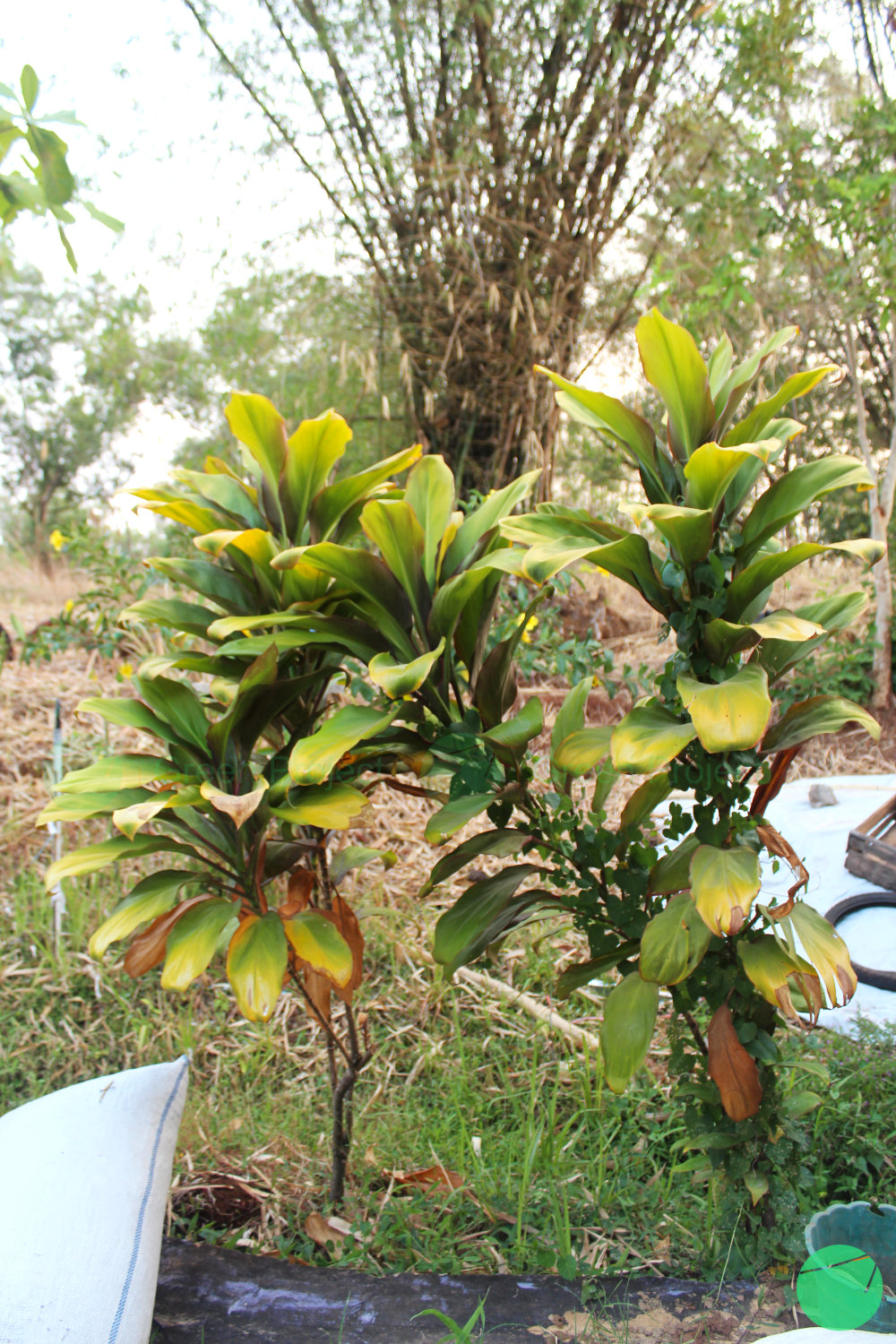Naming Identity
Hanjuang or Andong in Indonesia is scientifically named in Latin as Cordyline fruticosa and is synonymized as Cordyline terminalis.
Internationally, in English, this plant is known as ti plant, bongbush, cabbage pal, palm lily or ti palm. In England, this plant is more popular under the name good luck plant or tree of kings.
The word Cordell in the genus name comes from Greek with the meaning referring to its enlarged underground stem and roots (Cordyline Fruticosa – NBATAT, 2023).
This species was named by Linnaeus as Convallaria fruticosa in 1754, as Asparagus fruticosa in 1767 and also as Dracaena terminalis in 1767. It was named Cordyline ti by Schott in 1828 and finally as Cordylinefruticosa by Chevalier in 1919. Many other synonyms have been identified. applied to these species in the genera Cordyline, Dracaena and Taetsia. However, it is still often referred to as C. terminalis (L.) Kunth, although the Plant List indicates that this name is actually invalid (Simpson, 2022).
Taxonomy
Domain | Eukaryota |
Kingdom | Plantae |
Phylum | Spermatophyta |
Class | Monocotyledonae |
Order | Liliales |
Family | Agavaceae |
Genus | Cordyline |
Species | Cordyline fruticosa |
Origin
It is still not certain where this plant comes from. However, it is possible that ti plant originated from Southeast Asia and was then domesticated in Papua New Guinea. Ti plant is thought to have been brought by early Polynesians who migrated from the west (possibly Taiwan) to the east to be used as food, clothing, and for religious purposes (Borland, n.d.).
Traces of the Polynesians themselves can be traced through the Austronesian people who came from Southeast Asia around 60,000 - 40,000 years ago with the first wave of people migrating to the Sahul region. Then one branch of the Austronesian people migrated near Oceania around 1500 BC until 1200 BC began migrating east.
The Maori then brought it to New Zealand in the 13th century, including to the Kermadec Islands where it survives to this day. In New Zealand, this plant is said to be nearly extinct, with only one location of the two plants being discovered after a century of no records. After European settlement around the world, they were brought to warm, wet places as colorful or landscape plants for houses (Simpson, 2022).

Shape Description
Ti plant is a shrub or small tree that can grow up to 4.6 m tall with smooth, light gray stems that have a diameter of up to 7.5 cm.
The leaves grow densely in an alternate position and are spiral-shaped at the end of the stem, which is upright and without hairs. The leaf blades are narrow oval in shape, 18 to 45 cm long and 5 to 10 cm wide. The tips of the leaves are pointed and not serrated with a shiny surface. The leaf stalks are greenish with grooves, 5 - 10 cm long, and hairless.
The ti plant flower clusters are quite large, appearing in the middle of the cluster of leaves, with a length of around 30 to 38 cm. The shape is curved and branched.
Fruit on ti plants rarely forms. It has a diameter of about 6 mm with a yellow color that turns bright red. The fruit has a few shiny black seeds.
Habitats
Even though it is basically a forest plant, ti plant prefers open areas because it requires high light. Therefore, this plant generally grows in locations disturbed by humans. Hanjuang from sea level (wetlands) to 1200 m, and perhaps higher in its natural range (Simpson, 2022).
Benefits of Ti Plants for Health and Other Uses
The ti plant is said to have several health benefits, can be consumed, and is a plant used in spiritual activities in several countries.
The leaves can be used as food, to wrap food, to make clothes, especially traditional dance costumes, and as a material for making mats. The rhizomes, which are a source of carbohydrates (Simpson, 2022) can be eaten and are useful for making sugar (Borland, n.d.).
Based on a study conducted by Bogoriani et al. (2021) found that extracts from ti plant leaves contain saponin compounds, polyphenols, flavonoids, steroids, triterpenoids, phytosterols, amino acids, and alkaloids. So it can be further said that ti plant extract has antioxidant and antibacterial activity and has the potential to overcome infectious diseases caused by climate change such as dengue fever and diarrhea.
In Tahiti, the ti plant is a sacred and very spiritual plant. These plants are planted in four corners of the property and along the roads to ward off spirits from following humans. Protection and success are the meanings fundamentally contained in this plant. Ti plant is also used for walking on fire during ceremonies and priests use it for spiritual cleansing (Borland, n.d.). Not only that, the ti plant is also highly respected spiritually and is very common to be found in burial areas (Simpson, 2022).